Studio Essentials: Setaoc Mass
The important gear behind Sam Coates' sound.
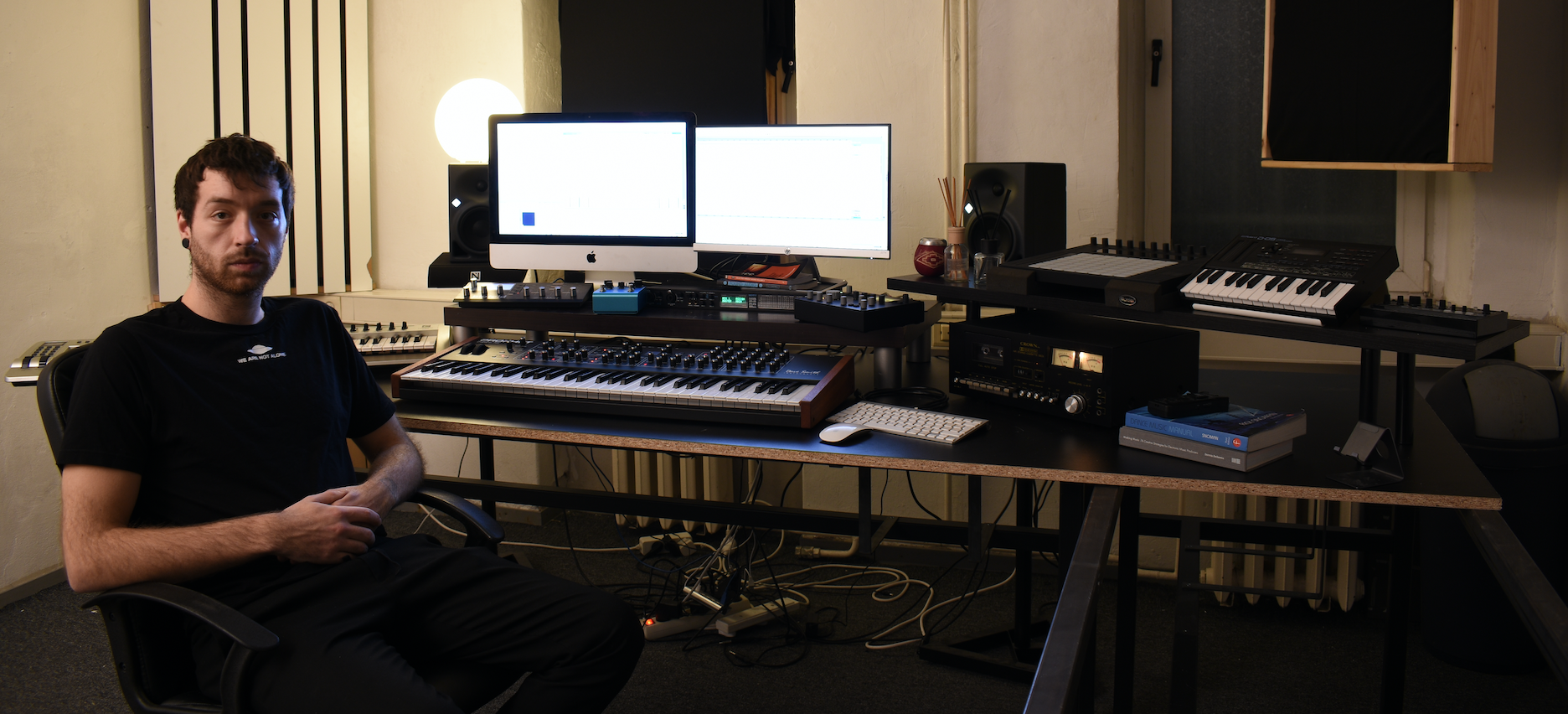
Studio Essentials: Setaoc Mass
The important gear behind Sam Coates' sound.
Setaoc Mass—real name Sam Coates—has already exhibited his DJing skills on XLR8R, turning in a head-spinning mix in December 2017, and now he returns to discuss his production.
Coates has been selecting and mixing records since the age of 16, growing up in Manchester, and began making music around the same time. Now based in Berlin, and with a rapidly expanding discography encompassing deep, dark, and percussive techno and atmospheric ambient, he’s establishing himself as a central figure in techno’s new-guard, taking the sounds of yesterday into tomorrow.
If you had to pinpoint a moment when it all changed, it’d likely be Coates’ 2015 four-tracker on Work Them Records, the opener of which saw big support from Jeff Mills. Soon thereafter, he featured on Figure and he’s since returned with two collaborations, with Matrixxman and Cleric, all the while keeping his SK_eleven label ticking over with a stream of solo outings.
It is via his own imprint that he recently dropped his most ambitious release yet, 53 Degrees North, a two-part EP that captures both sides of his production palette. While Part One focuses on four-to-the-floor club-centric music, Part Two sees Coates being more experimental, paying homage to past influences as he floats between ambient, IDM, and electro, all rife with emotion and passion. While so much about his life has has changed since he first started out, his setup has remained refreshingly similar, limited to the few pieces of gear that he feels he really needs. In support of the release, XLR8R caught up with Coates to learn more about the tools behind it.
Waldorf Blofeld
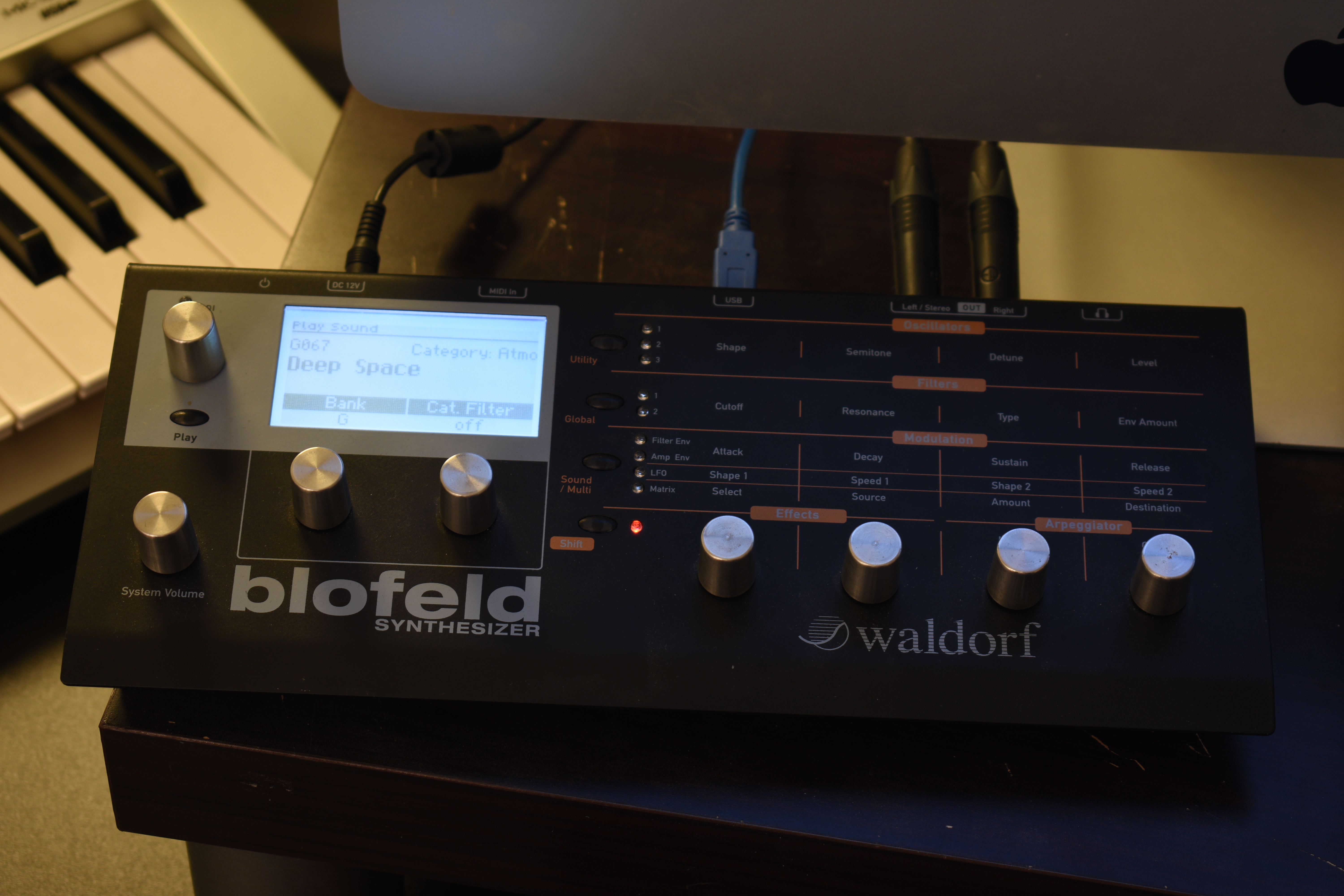
Coming from a background of only using plug-ins for most of my production career, the Blofeld was the first proper synth I bought a fair few years back, because its cheap and extremely versatile. The menu diving on this is amazing; the amount of routings that you can use to manipulate sounds really is endless. My main use of this now is for atmospheric sounds, sounds that can sit in a track and really blend it altogether. It always delivers quality tones and textures that can be well sculpted into the thought you have in your head.
When I say it is good for the atmospheric sounds, it’s also amazing for bleepy sequences. This was used as a layered part in “Evidence” where I ran the Blofeld into the MIDI sequencer Max for Live ML185. This works perfectly with a sequencer, having the notes continually playing while you play around with the envelope and filter controls. And then this paired up with Rob Papen’s Blue-II to finalise the sine wave noises in “Evidence.”
Tascam DR-07
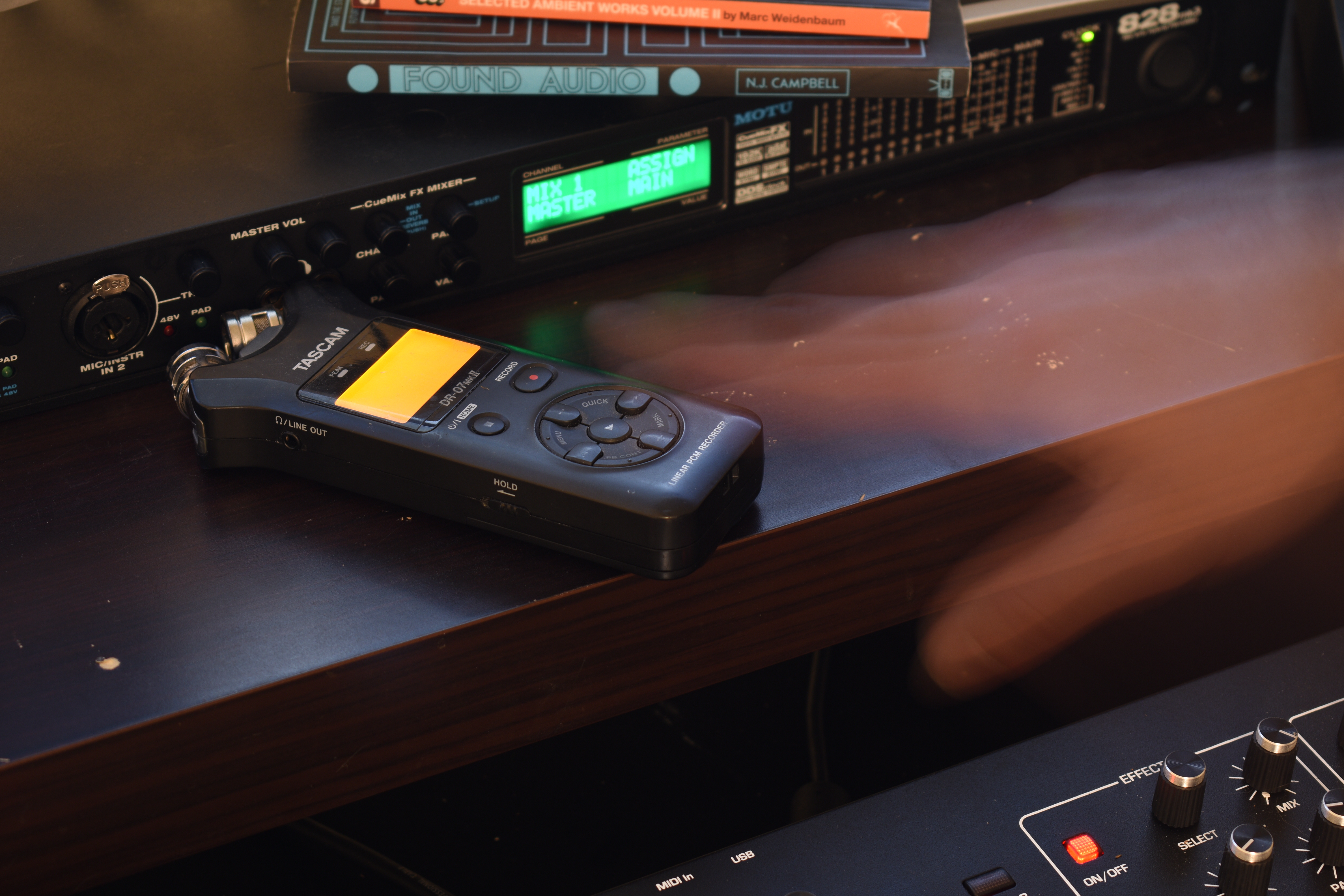
The ease of use of a field recorder is so incredible. This one is small and light enough to travel to most places with me—it’s just so simple to step outside and record something, and I think this is all part of being an artist, discovering sounds where ever you go. I try to do longer recordings with this so as to capture some sort of atmosphere or feeling which can be used as an underlying layer in my productions as well. Mostly I use this for my experimental stuff—and I have whole banks on my computer now with various recordings from places I’ve been. And if you don’t have one of these field recorders then even iPhones can record a decent quality sound.
I can’t figure out exactly which sounds were directly used in 53 Degrees North as there are so many and I try to disguise the sound as much as possible; it should only be used to fill out the spectrum and not for an exact main part. I think on some of the experimental tracks I did chop up some transients from some hits I made with this to layer alongside the snares and kicks prominent in Part Two—this adds sound that is more organic and has more feeling than just standard 808/909 samples.
Strymon Blue Sky
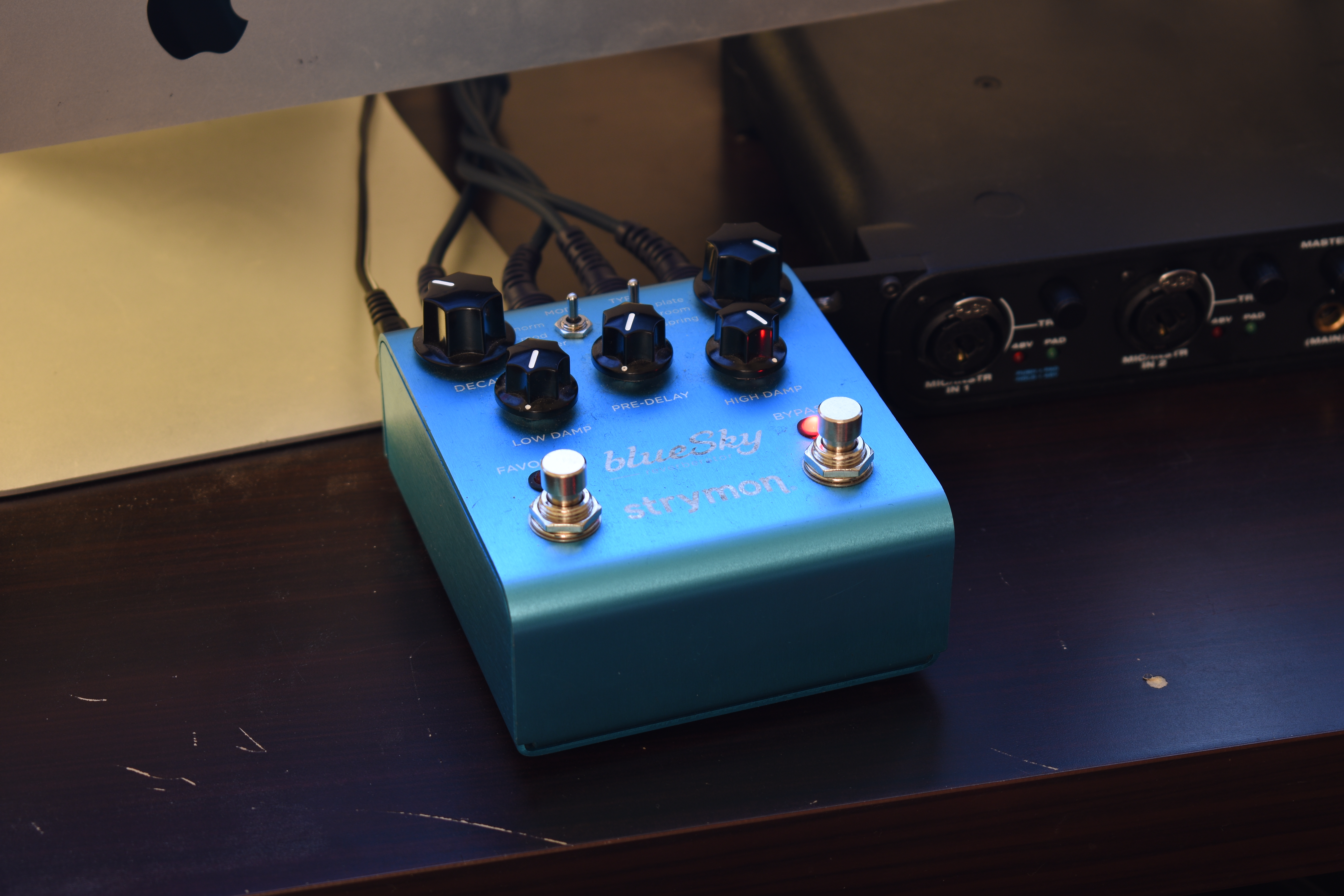
As recently stated in Avalon Emerson’s Resident Advisor feature, this is the the “techno bro’s reverb,” and she couldn’t be more right. Straight forward five knobs, six template settings—I find this machine better for longer reverbs rather than short ones, and I think I’d like more settings when using reverb for shorter hits and would aim for something like the Big Sky or Eventide in the next months. It’s great to use on a return channel as it can be pretty strong and muddy when used on individual channels. This made its way into most of the tracks on the latest double EP; I always run a few sounds through this and record the reverbs while I’m messing around with some settings. It’s great for using a little bit in a live context, so the reverb doesn’t get to static sounding.
I also use this every time I DJ. For me, using it for DJing adds a whole other dimension to the music, building drops and generally smoothing out transitions. It’s great for the warm up sets, too.
Prophet REV2

Next up is the Prophet REV2, my baby and the centrepiece of the studio. To be honest, I am not a gear junkie so when I was looking for an analog synth then it had to be capable of a lot of things. And this machine is more than worthy of that. When I produce I always use keys to find melodies and pitches. I can’t sit there and draw things into a piano roll on Ableton—and I never have been able to do that. I’ve always just saw down with a MIDI keyboard in front of me so I had to get this with its beautiful 61 keys. I saved up a lot to be able to afford this. The machine has a beautiful sound and is capable of almost everything with endless possibilities for routing LFOs or adding in internal FX which, as expected, are very high end. Normally my setup would be more “in the box,” as I said earlier, but since I bought this I haven’t even opened a plug-in.
“Don’t Go to Bed Angry,” the B2 on the second part of 53 Degrees North, was made pretty much entirely on this, late on a Friday night where I felt music had to come out of me. Mainly it was recording a whole bunch of audio, maybe around 15/20 different sounds and melodies, all played by hand and then chopped up and layered and the best sounding ones were taken and used to build this track. Also, the main pads were played over this live when I had the main structure down.
Elektron Analog Heat mk2
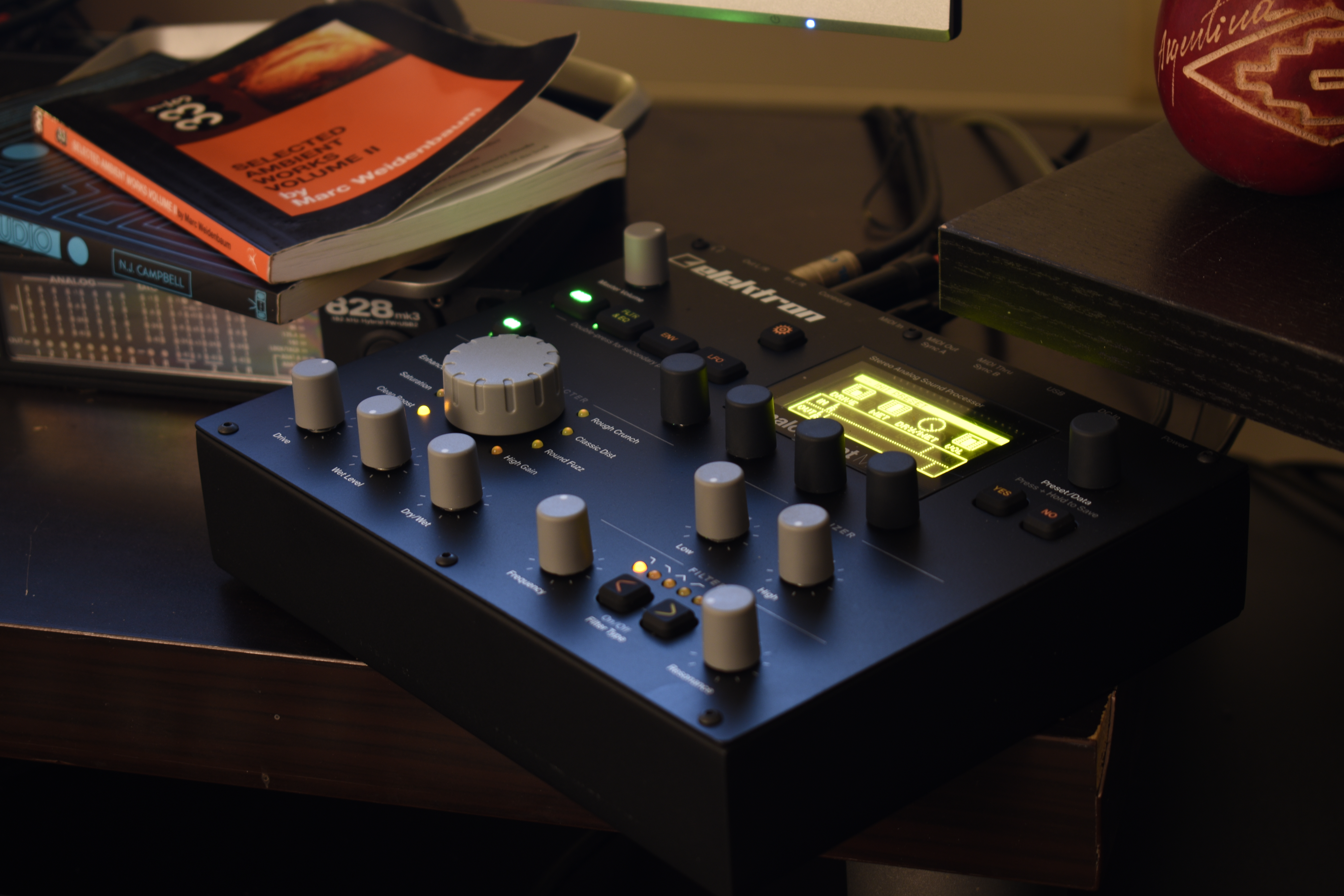
And finally a new addition to the studio: my first Elektron piece, the Analog Heat. When I’m only using certain hardwares I wanted to expand my sound, and the next step was to add character to my productions inside Ableton. The Elektron Analog heat does this very well—it has so many capabilities, especially with the “Overbridge” software. You can do so much with this machine to really push productions to new sonic levels and the user bank to save pre-built patches can really craft your own niche sounds. I’m looking forward to checking out more Elektron stuff in the future. (This machine was bought a little later so I’ve only used it on my latest tracks that will be coming out later in the year).

